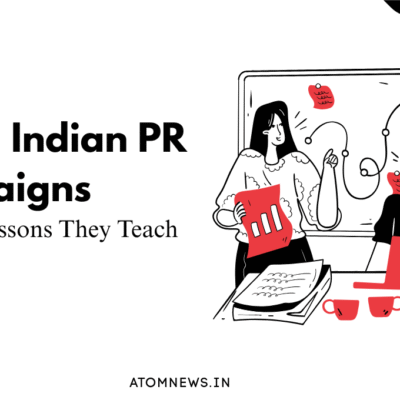SEO in India is undergoing one of the biggest transformations since search engines first emerged. With AI-driven algorithms, multimodal search experiences, voice-led interactions and regional-language dominance, SEO in 2026 is no longer about stuffing keywords or building backlinks. It has evolved into a sophisticated ecosystem centred on intent, context, user experience and trust.
As search platforms like Google, Bing, YouTube and new AI-driven assistants shift towards conversational and predictive models, Indian brands must rethink their SEO strategies. The rules that defined the last decade—keyword density, short-form optimisation, exact-match phrases—are being replaced by deeper signals such as content authority, multimedia relevance, regional-language usability and real-time user behaviour.
This article explores how SEO is evolving in 2026, supported by industry reports and insights, with internal AtomNews references for continued reading.
Search Is Becoming Conversational, Predictive and Visual
Search engines are no longer just responding to queries—they’re anticipating them. Google’s Search Generative Experience (SGE) and Bing’s AI-driven answers rely on context-rich, conversational content that mirrors human speech.
SEO is moving from “How do I rank for this keyword?” to “How do I provide the best answer in the most useful format?” With visual search tools like Google Lens and Pinterest Lens gaining traction, Indian users are discovering products simply by pointing their camera at them. This shift requires brands to optimise images, alt-text, structured data and visual descriptions—a layer of SEO that was once optional but now critical.
User Intent Matters More Than Target Phrases
In 2026, Google’s algorithms evaluate content based on the depth of understanding it provides—not just how often it mentions a keyword. The shift from keywords to intent means search engines reward content that aligns with human needs:
- Why is the user searching?
- What are they trying to compare, solve or understand?
- In which format do they prefer the answer?
The E-E-A-T framework (Experience, Expertise, Authoritativeness and Trustworthiness) has become more dominant than ever.
Content backed by data, credible authorship, industry references and transparent sources performs significantly better in an era where authenticity matters as much as relevance.
Regional-Language SEO Will Shape Discoverability
India’s linguistic diversity is reshaping how search engines interpret relevance. The KPMG Language Report highlighted that 75% of new Indian internet users prefer regional languages, making multilingual SEO essential.
With voice search growing across Hindi, Tamil, Telugu, Bengali and Marathi users, SEO has become deeply tied to natural language processing. Regional-language FAQs, conversational answers, culturally contextual examples and hyperlocal landing pages will drive visibility in 2026.
Voice Search and AI Assistants Are Taking Over Search Behaviour
India is a voice-first market. According to the Digital 2024 India Report by DataReportal, over 52% of Indian internet users use voice search every month.
Voice-led queries are longer, more conversational and often intent-heavy. This requires brands to optimise content for:
- Question-style queries
- Natural phrasing
- Featured snippets
- Structured data
- Short, direct, spoken answers
In 2026, ranking for voice search depends less on keywords and more on conversational clarity.
Topical Authority Will Outperform Traditional Backlinks
Search engines now prioritise brands that demonstrate ongoing expertise in a subject area. Instead of a few well-performing articles, Google rewards clusters of interconnected, in-depth content. This is known as Topical Authority.
Brands must build:
- Topic clusters
- Pillar pages
- Deep-dive explainers
- Expert-led commentary
- Updated insights
Backlinks still matter, but authority comes more from depth than quantity. High-quality, research-backed, structured content will outperform shallow keyword-driven blogs.
Search Is Becoming Multi-Format: Text Alone Isn’t Enough
Text remains important, but search platforms prioritise multimodal signals—videos, audio, infographics, carousel visuals and interactive elements. The YouTube India Insights 2024 Report highlighted that YouTube is now the “first search engine” for millions of Indians looking for tutorials, reviews and explainer content.
Brands that rely only on written content will lose visibility. In 2026, SEO success requires:
- Vertical videos
- Long-form YouTube explainers
- Infographics
- Visual search optimisation
- Podcasts optimised with transcripts
SEO is becoming an ecosystem, not a checklist.
UX, Page Experience and Speed Are Now Ranking Essentials
With Core Web Vitals updates, Google prioritises websites that load fast, adapt smoothly and provide a frictionless experience. Poor mobile layouts, pop-ups, slow speeds and cluttered pages will directly hurt rankings.
According to Google’s Page Experience Report, mobile users abandon websites that load slower than 2.5 seconds.
In 2026, SEO is inseparable from user experience.
The Bottom Line
SEO in 2026 is no longer a keyword game—it is a full-spectrum strategy rooted in relevance, authenticity, user experience, intent and real human value. As search ecosystems evolve into AI-driven, multimodal and multilingual platforms, brands must adapt with content that answers, guides and engages. The future belongs to those who prioritise depth over density, insight over impression, and user-first experiences over keyword-first optimisation.





